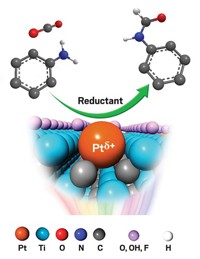Advertisement
Grab your lab coat. Let's get started
Welcome!
Welcome!
Create an account below to get 6 C&EN articles per month, receive newsletters and more - all free.
It seems this is your first time logging in online. Please enter the following information to continue.
As an ACS member you automatically get access to this site. All we need is few more details to create your reading experience.
Not you? Sign in with a different account.
Not you? Sign in with a different account.
ERROR 1
ERROR 1
ERROR 2
ERROR 2
ERROR 2
ERROR 2
ERROR 2
Password and Confirm password must match.
If you have an ACS member number, please enter it here so we can link this account to your membership. (optional)
ERROR 2
ACS values your privacy. By submitting your information, you are gaining access to C&EN and subscribing to our weekly newsletter. We use the information you provide to make your reading experience better, and we will never sell your data to third party members.
Materials
Tin Sulfide Films From Solution
Simple method yields phase-pure product quickly and at low cost
by Mitch Jacoby
October 13, 2014
| A version of this story appeared in
Volume 92, Issue 41
Owing to its low cost and potentially useful electronic properties, tin sulfide is a promising candidate for applications such as photovoltaic devices. Yet the semiconductor remains largely sidelined because methods used for making high-quality tin sulfide films, such as atomic layer deposition and thermal and electron beam evaporation, are laborious and costly. A team led by Richard L. Brutchey of the University of Southern California and Nathan S. Lewis of Caltech has now demonstrated that high-quality tin sulfide films can be prepared via a simple low-temperature solution-phase method (Chem. Mater. 2014, DOI: 10.1021/cm503124u). The researchers dissolved tin sulfide powder in a mixture of ethylenediamine and 1,2-ethanedithiol at 50 °C then spin-coated the solution onto glass plates or other supports. They briefly heated the films then conducted spectroscopic, photovoltaic, and X-ray analyses. Although tin and sulfur can form SnS2, Sn3S4, Sn4S5, and other phases, the team reports that the simple solution method yields defect-free, phase-pure SnS films that generate stable photocurrent values comparable with samples prepared by more complex deposition methods.




Join the conversation
Contact the reporter
Submit a Letter to the Editor for publication
Engage with us on Twitter